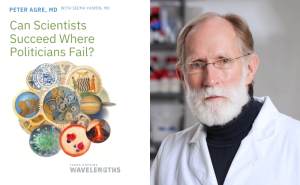New Study: Ultrasound Can Accurately Diagnose Pediatric Pneumonia and Assess Vaccine Effectiveness in Preventing Illness
A new study, conducted by researchers at the Johns Hopkins School of Medicine and Bloomberg School of Public Health, found ultrasounds to be a successful diagnostic tool for pediatric pneumonia as well as a useful alternative to X-rays for the evaluation of vaccine effectiveness against pneumonia infection.
Pneumonia is the leading cause of death in children under five years of age worldwide. “Today’s ultrasounds are portable and lightweight, and therefore can be used as a point-of-care tool for the diagnosis of pediatric pneumonia in both clinical settings and research studies” says William Checkley, MD, PhD ’02, ScM ’96, an associate professor at the School of Medicine and in the Department of International Health at the Bloomberg School. The illness is vaccine preventable but measuring vaccine effectiveness is difficult because there is no baseline method to diagnose pediatric pneumonia and there are many potential causes for illness that present with similar symptoms.

The study was conducted over the course of two years in three subdistricts of the Sylhet District in Bangladesh and assessed over 9,000 suspected pneumonia cases in children 3 to 35 months of age. Overall, it was determined the 10-valent pneumococcal conjugate vaccine, PCV10, was effective at reducing pneumonia in children 3 to 35 months of age compared to unvaccinated children of the same age.
In addition to determining the effectiveness of the PCV10 vaccine, the study also tested ultrasounds as an alternative method for pneumonia diagnosis. Currently the most common diagnostic tool is a chest X-ray; however, ultrasounds are also used for lung imaging and examination but are not commonly utilized in pediatric settings. Using ultrasounds instead of traditional X-ray has many advantages because ultrasounds are:
- Less expensive
- Portable, allowing for use in non-clinical settings
- Do not have ionizing radiation
- Provide ability for quantitative assessment of the size of an infection
Unlike X-rays, in which pneumonia infection has an established clinical presentation that is well recognized by physicians, ultrasound pneumonia diagnosis did not have a clear clinical definition; therefore, sonographically confirmed pneumonia was defined by the study authors as a consolidation—region of lung tissue filled with substances such as blood, water, or pus instead of air—greater than or equal to 1 cm. This new classification allows physicians to diagnosis suspected cases of pediatric pneumonia using ultrasound imaging more easily in clinic and community settings.
Over the course of the study using this characterization, researchers found PCV10 effectively
- Reduced pneumonia infection in vaccinated children compared to unvaccinated children,
- Prevented 25% of pediatric pneumonia cases with a consolidation size greater than 1.5 cm, and
- Inhibited infection in younger children at higher levels than in older children
Through this study, researchers were able to demonstrate the effectiveness of vaccination against childhood pneumonia infection, develop a program of standardization and retraining on lung ultrasound usage for pediatric pneumonia, present novel information for pneumonia classification such as the assessment of consolidation size, and provide support for a more accessible diagnostic alternative using ultrasound that can be used in further vaccine evaluation studies.
The study was published August 1, 2022, in Respiratory Research and was funded by the Bill & Melinda Gates Foundation and GlaxoSmithKline.
Effectiveness of the 10-valent pneumococcal conjugate vaccine on pediatric pneumonia confirmed by ultrasound: a matched case–control study was written by William Checkley, Shakir Hossen, Eric D. McCollum, Farhan Pervaiz, Catherin H. Miele, Miguel A Chavez, Lawrence H. Moulton, Nicole Simmon, Arunangshu D. Roy, Nabidul H. Chowdhury, Salahuddin Ahmed, Nazma Begum, Abdul Quaiyum, Mathuram Santosham, and Abdullah H. Baqui.





